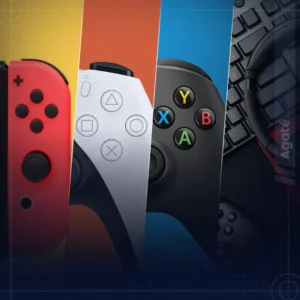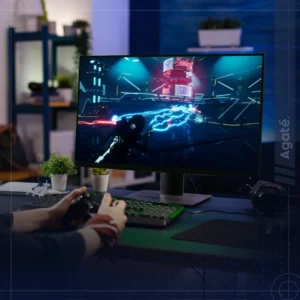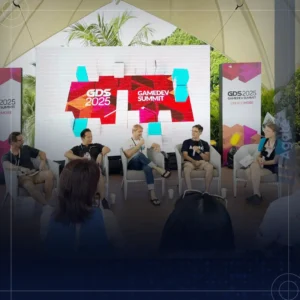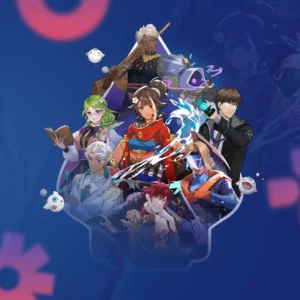Unity game engine is a popular and widely used tool for creating interactive media, such as video games, simulations, and virtual reality. But how did it start, and what are its main features and achievements? Here’s a brief overview of the history of the Unity game engine.
Unity game engine was born in 2004 as a project of three Danish friends: David Helgason, Joachim Ante, and Nicholas Francis. They wanted to create a game engine that would be easy to use, affordable, and cross-platform. They named their company Over the Edge Entertainment (OTEE) and launched the first version of Unity in 2005 at the Apple Worldwide Developers Conference as a Mac OS X game engine.
Unity’s success was largely due to its support for independent developers who lacked the resources to license expensive game development technology. The founders of Unity had the vision to create the definitive tool for 3D on the web, but they did not know which medium to use. The group was looking for a CEO, and their first thought was that they would take turns fulfilling this position. They quickly realized that this would not work if they wanted to become successful. They put out an ad saying;
“Have great tech, need CEO.”
They got a few applicants, but everyone they found was;
“Slightly behind the curve – even though we weren’t that far ahead,”
Said Helgason.
In the end, they didn’t find anyone suitable. But because Helgason was the most social of the three, he became the CEO by default. They incorporated Over the Edge Entertainment (OTEE) and modeled their business plan after Criterion, which had a strong presence in the PlayStation 2 middleware market. Criterion’s approach was not just about having excellent technology but also about attracting major game developers to use their technology. The idea behind this was that consumers would be more willing to license an expensive engine if they saw it being used by renowned game developers.
Realizing the growing potential of casual and online gaming, OTEE decided to focus its efforts on this market. After two years of coding and countless sleepless nights, Unity was getting closer to launch. The team recognized the need to create a full commercial game using their new engine, not only to test its capabilities and limitations but also to generate revenue for food and future development. David Helgason humorously stated;
“Nobody really remembers how we survived in that period except we probably didn’t eat much”
Said David Helgason.
During the beta phase of the new engine, which was still being refined, OTEE spent five months developing a game called Gooball. Ambrosia Software published Gooball in March 2005. This game provided the Unity team with an opportunity to thoroughly examine their engine, identify bugs, address any user annoyances, and improve the interface before its official release.
Using the profits from Gooball, OTEE expanded its team by hiring more developers to refine Unity further before its initial 1.0 release in June 2005. They were determined to give Unity the best possible chance of success, so they meticulously polished its features, provided comprehensive documentation, and offered extensive user support. Shortly after the release, the company immediately started working on the next version of Unity.
Unity quickly gained recognition and popularity among indie game developers, especially for iOS and Android mobile platforms. Unity 2.0, released in 2007, introduced new features such as networking, terrain engine, dynamic shadows, and video playback. Unity also added support for Windows and web browsers, making it more accessible and versatile. Then, in 2010, Unity 3.0 was launched, it expanded the engine’s graphics capabilities for desktop computers and consoles. It also integrated Illuminate Labs’ Beast lightmap tool, deferred rendering, a built-in tree editor, native font rendering, automatic UV mapping, and audio filters. Unity also started to offer free licenses for personal and educational use, as well as premium licenses for professional and commercial use.
In 2012, Unity 4.0 was released, and it marked a major milestone for the engine. It introduced a new animation system called Mecanim, which allowed for more realistic and complex character animations. It also added support for Linux, Adobe Flash Player, PlayStation 3, Xbox 360, Wii U, and Windows Phone 812 Moreover, it featured the first version of Unity Asset Store, a marketplace where developers could buy and sell assets such as models, textures, sounds, scripts, and plugins2
In 2015, a new version of Unity was released called Unity 5.0. This update brought a wave of excitement among game developers and creators as it promised to improve the engine’s performance and quality. Unity 5.0 introduced a range of new features, including a physically based rendering (PBR), global illumination (GI), high dynamic range (HDR), real-time reflections, and a 64-bit editor. It was a significant leap forward for Unity, solidifying its position as a leading game development engine.
But that’s not all. Unity 5.0 expanded its horizons by adding support for a wide array of platforms and devices, such as WebGL, PlayStation 4, Xbox One, Nintendo Switch, Oculus Rift, Gear VR, Google Cardboard, and Microsoft HoloLens. This meant that developers could reach a broader audience and explore new frontiers in virtual reality and augmented reality experiences.
Moreover, Unity 5.0 introduced Unity Services, a suite of cloud-based tools and services designed to assist developers in game development and monetization. With Unity Services, developers had access to a range of resources to enhance their creations and optimize their business strategies.
Unity continued its journey of innovation in subsequent years. Unity 2017 and 2018 are built upon the solid foundation of Unity 5.0, offering even more functionality and usability. Features like Timeline, a cinematic tool, allowed developers to create captivating storytelling experiences within their games. Cinemachine, a camera system, provided greater control over camera movements and angles, enhancing the visual impact. The Post-processing Stack became a powerful visual effects tool, adding a layer of polish to games.
Unity 2017 and 2018 also introduced other exciting additions like Scriptable Render Pipeline (SRP), Shader Graph (a node-based shader editor), Machine Learning Agents (ML-Agents), Visual Effect Graph (VEG), Lightweight Render Pipeline (LWRP), High Definition Render Pipeline (HDRP), Entity Component System (ECS), Job System (a multithreading system), Burst Compiler (a code optimization tool), Prefab Variants (a prefab editing tool), Nested Prefabs (a prefab hierarchy tool), ProBuilder (a level design tool), Polybrush (a sculpting and painting tool), TextMesh Pro (a text rendering tool), Addressable Asset System (an asset management tool), DOTS Editor (a data-oriented design tool), Project Tiny (a lightweight game framework), AR Foundation (an augmented reality framework), Universal Render Pipeline (URP), and Data-Oriented Technology Stack (DOTS).
Unity’s evolution didn’t stop there. Unity 2019 and 2020 focused on stability and performance improvements, aiming to make the engine even more robust and efficient. New features like Incremental Garbage Collection (IGC) and Burst Inspector, a code analysis tool, helped developers optimize their code and improve overall performance. Tools like DOTS Runtime Debugger and DOTS Live Link aided in debugging and live editing. DOTS NetCode provided a networking framework, enabling multiplayer experiences. The Input System and UI Toolkit simplified input management and user interface development, respectively. Unity 2019 and 2020 also saw updates and improvements in Shader Graph, Visual Effect Graph, Universal Render Pipeline, and High-Definition Render Pipeline.
Fast forward to the present day, and we arrive at Unity 2021, the latest version of the engine as of May 2023. Unity 2021 introduces new features like Project Mars (a mixed reality framework that enables developers to blend the real and virtual worlds), Unity Reflect (a data visualization tool for architecture, engineering, and construction industries), and Unity Forma (a marketing content creation tool for the automotive industry). It also continues to update existing features such as DOTS Editor Preview Package, Shader Graph, Visual Effect Graph, Universal Render Pipeline, High-Definition Render Pipeline, and more.







